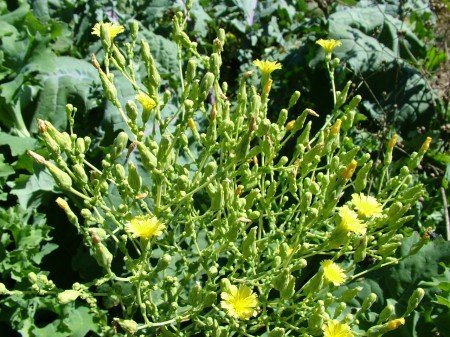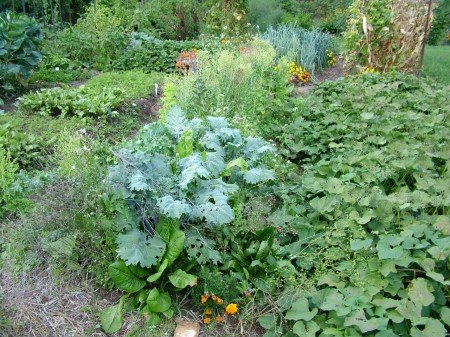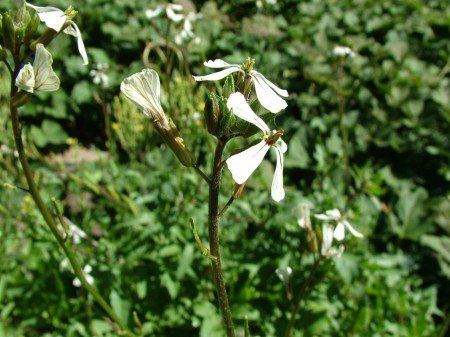I could have titled this, “Seed Saving for Dummies”, but I’ve never been a fan of the “For Dummies” or “Idiot’s Guide” list of titles for how-to manuals. How dare they imply that I may not be too smart? Anyone reading our blog posts is obviously very intelligent and I would never insinuate otherwise.
There are plenty of seed-saving guides out there and this is not going to be a treatise on complicated seed-saving techniques. Some seed saving is extremely easy. This picture shows the bed where I grew garlic and interplanted it with salad greens. I wrote about that here.
The garlic was harvested in July and the lettuces and most of the other greens have long bolted. Rather than ripping them out, I’ve let them flower and put out seed. Also in the bed is cilantro, dill and kale. Those all are repeat volunteers which I encourage by letting them go to seed and then scattering the seed when it dries. These volunteers come up everywhere and I have them to transplant, leave to grow if they are not in the way, or just cull out the ones in the wrong place as if they were a weed.
The lettuces, arugula, mustards and other greens now flowering will drop seed, some of which will come up as volunteers next spring. I’ll transplant some of them and I’ll also save and dry some of the seed heads this fall to have free seed to plant next season.
In all cases saved seed should be from open pollinated varieties. Hybrids are not reliable to give an offspring you may be happy with.
This method of seed saving is cheap and easy, but it has the minor drawback in that seeds can cross. This is more likely with lettuce. There is a chance it will cross with wild lettuce and produce a bitter offspring. It could also cross with another lettuce variety. That would not be a problem, it just wouldn’t be the same lettuce you had originally planted. But over the years, I’ve have plenty of volunteers, free seeds, and no crossing that I was aware of. For cilantro and dill, unless you grow several varieties, crossing won’t be an issue.
While this isn’t quite permaculture, a significant portion of my vegetable garden is volunteer or grown from saved seed. Saving seeds from other vegetables is also very easy. We’ve saved bean and pea seeds, which is no more difficult than letting the pods get almost dry on the vine then finishing the process of totally drying indoors. If you leave the pods to dry completely on the vine, there is a danger the pods will split and the seed will fall to the ground.
For seeds from tomatoes, peppers, melons, squash and other vegetables, the process is a little more complicated, but still easy. For the home gardener who does not have to ensure that the seed saved will produce an exact offspring of the parent, you really don’t have much to lose by giving simple seed saving a try.




Love this!!!!